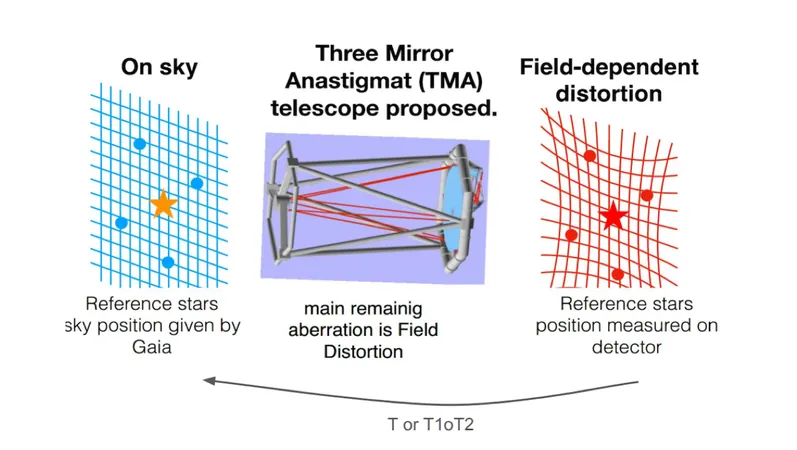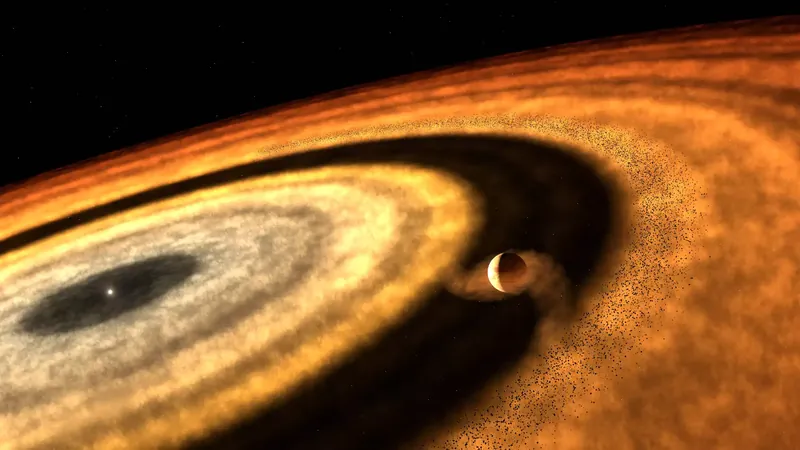
Unlocking the Secrets of Exoplanets: Revolutionary Advances in Differential Astrometry Calibration
2024-12-29
Author: Sarah
Introduction
In the thrilling field of astronomy, high precision differential astrometry stands out as a pivotal technique for evaluating the relative position, distance, and motion of celestial bodies in relation to distant stars. This groundbreaking method plays a critical role in the study of exoplanets and has the potential to discover the enigmatic nature of dark matter within our galaxy.
The Theia Mission
An exciting development on the horizon is the Theia mission, proposed to the European Space Agency (ESA) in 2022 as part of its M7 call for space missions. Theia aims to employ a sophisticated diffraction-limited telescope, approximately 1 meter in diameter with a field of view of 0.5 degrees. This cutting-edge instrument is designed to achieve astonishing angular accuracy of sub-micro-arcseconds—equivalent to 1e-5 pixels on the detector. Such precision allows astronomers to delve into the architecture of exoplanetary systems close to the Sun and even detect planet masses down to that of Earth.
Technological Advances
Central to the mission's success is the improvement of technology readiness levels (TRL) for two crucial aspects: the calibration of advanced CMOS detectors and the spatial calibration of the telescope's focal plane. This is essential because extreme precision, reaching up to the 1e-5 pixel level, is required to capture the delicate movements of celestial objects accurately.
Research and Development
Previously conducted research with smaller detector matrices (80x80 pixels) has confirmed the feasibility of such high-precision calibration. Now, the challenge is to validate this method using much larger detectors developed by Pyxalis, a company located near Grenoble, which specializes in large-scale detectors (8000x7500 pixels) characterized by low noise and high sensitivity. These advancements promise to boost the accuracy of astronomical observations immensely.
Testing and Calibration
In a laboratory setting, the performance of these large detectors will be rigorously tested to ensure compliance with required specifications. Another critical component of the mission involves addressing telescope stability, since even slight perturbations can lead to significant inaccuracies in measurements.
Reference Stars and Metrology
Recent investigations have shown that the reference stars visible within the telescope's field can serve as metrology sources, enabling scientists to compute the field distortion function effectively. Innovative simulations help model optical aberrations using bivariate polynomials, while also evaluating how various factors—like the degrees of these polynomials, the number of reference stars used, and perturbations affecting the M2 mirror—impact calibration accuracy.
Conclusion
Stay tuned for the unveiling of the latest results from a specially developed test bed aimed at studying this novel field calibration methodology. The insights gathered during these experiments could not only propel our understanding of exoplanets but also change the course of astrophysical research as we know it. Exciting times lie ahead as we push the boundaries of what we can discover about our universe!


 Brasil (PT)
Brasil (PT)
 Canada (EN)
Canada (EN)
 Chile (ES)
Chile (ES)
 Česko (CS)
Česko (CS)
 대한민국 (KO)
대한민국 (KO)
 España (ES)
España (ES)
 France (FR)
France (FR)
 Hong Kong (EN)
Hong Kong (EN)
 Italia (IT)
Italia (IT)
 日本 (JA)
日本 (JA)
 Magyarország (HU)
Magyarország (HU)
 Norge (NO)
Norge (NO)
 Polska (PL)
Polska (PL)
 Schweiz (DE)
Schweiz (DE)
 Singapore (EN)
Singapore (EN)
 Sverige (SV)
Sverige (SV)
 Suomi (FI)
Suomi (FI)
 Türkiye (TR)
Türkiye (TR)
 الإمارات العربية المتحدة (AR)
الإمارات العربية المتحدة (AR)